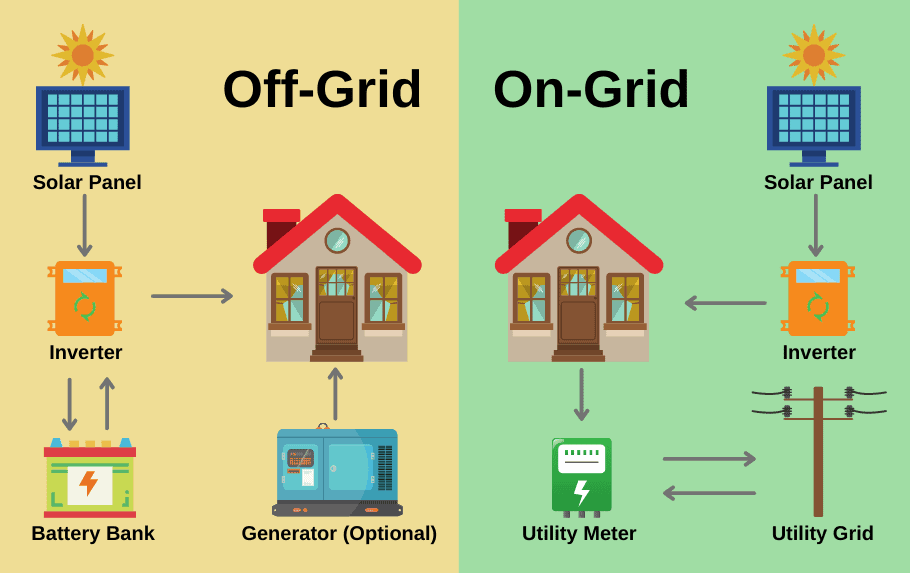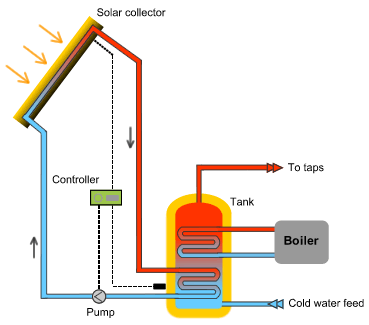Solar power works by converting the sun’s energy into electricity. The sun produces two forms of energy that we can use: to power electrical appliances and for heat.
The technology for each system is different, although the sun is the same energy source.

Solar Panels Systems That Provide Energy
Solar photovoltaics (PV) is a key technology used to generate electricity from the sun. Solar PV use the photovoltaic effect, in which photons (the unit of light) strike a semi-conductor material (such as silicon) to release electrons and generate electricity. We can then use this electricity to power lights, appliances, and other devices.
Solar panels absorb sunlight with photovoltaic (PV) cells. They are optimally placed in a spot that gets direct sunlight, which is usually on a rooftop, or purpose-built mounting.
The solar panels installed on your roof collect energy from the sun and convert it into direct current (DC) electricity. This DC electricity flows through an inverter inside your home, which converts it into alternating current (AC) electricity. AC electricity powers appliances and lights in a home. Any excess electricity your panels produce is sent to the electric grid. If you need more electricity than your solar panels produce, the extra electricity you need will come from the electric grid.
Summary
- To produce renewable energy, solar panels absorb energy from the sun.
- Photovoltaic cells, convert the solar energy into DC electricity.
- The DC electricity is converted to AC electricity (used by most appliances) by an inverter.
- The electricity produced by the inverter is used instead of grid electricity to power the home.
- Excess power you do not use immediately can be stored in batteries for later use.
- Excess electricity produced by the panels is sent to the electric grid. In Spain, you are not paid for your excess electricity but are given credit against any future grid usage.
Solar Thermal For Heating WATER
Solar thermal systems are more straightforward than solar power systems, as they use sunlight to directly heat the water. In residential settings, solar thermal panels are placed on a roof that faces the sun. This heats water stored in a tank or water cylinder.
Depending on your location, and because the strength of solar energy changes depending on the season, a solar water heating system may not provide all the hot water required all year round, but it will go a long way to help reduce your electricity bills significantly.


